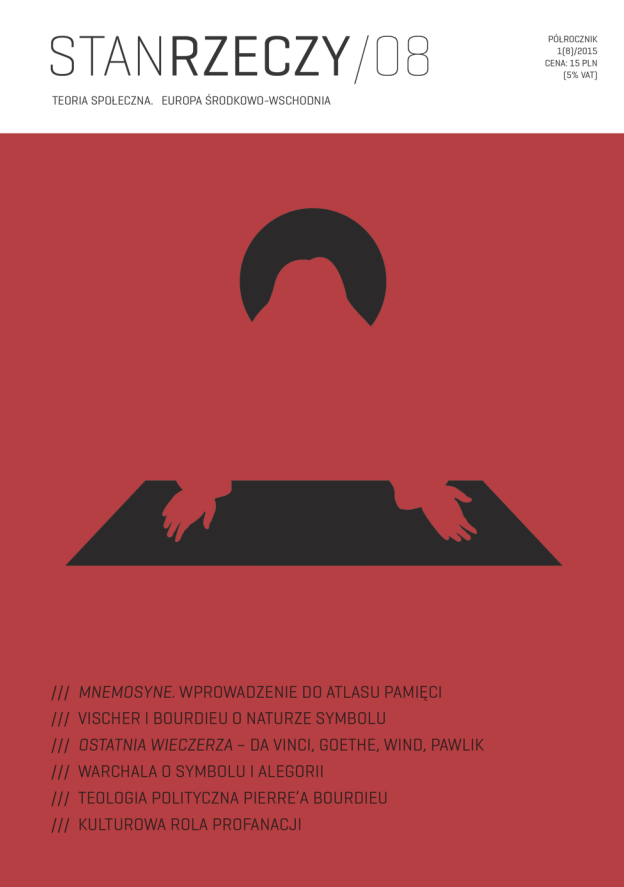
We kindly inform you that, as long as the subject affiliation of our 300.000+ articles is in progress, you might get unsufficient or no results on your third level or second level search. In this case, please broaden your search criteria.

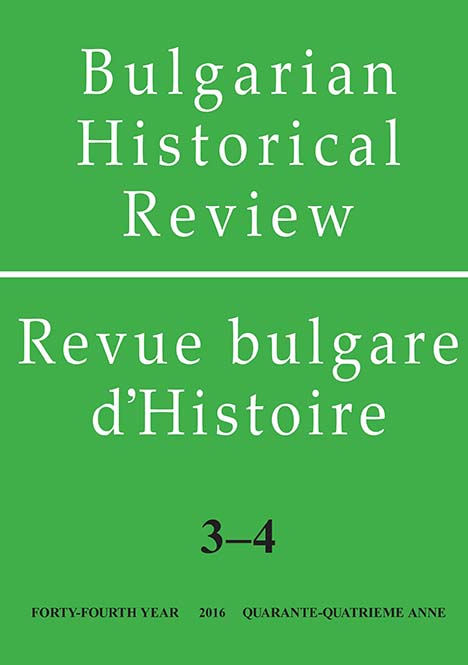
The article examines the place of photography in the modernizing Bulgarian society. The issues related to the development of the photographic craft after the Liberation are outlined, with emphasis on the emergence and evolution of legal regulations for the practice of the photographic profession. Attention is paid to the creation of professional organizations of photographers, and their statutes are also considered. A logic consequence of the long-standing efforts of many prominent photographers was the 1928 Royal Decree, with which photography was recognized as a craft - photographers thus received the protection that was guaranteed by the state to other crafts as well as the corresponding obligations to it. The next step of professional photographers was connected with the effort to reduce the possibility for people without the necessary qualifications to receive masterful testimonials. The picture assumed the role of a correct reflector of the preserved monuments of cultural and historical heritage scattered around the Bulgarian lands – photography becomes an assistant of archeology. An overview and list of the development and distribution of photographic workshops on the Bulgarian lands from the Liberation to the end of the 1930s are presented. In conclusion, it is argued that from the Liberation until the 1930s photography succeeded in establishing itself as a common means of reflecting the reality – a fact which is explained by the rapid modernization of the Bulgarian state.
More...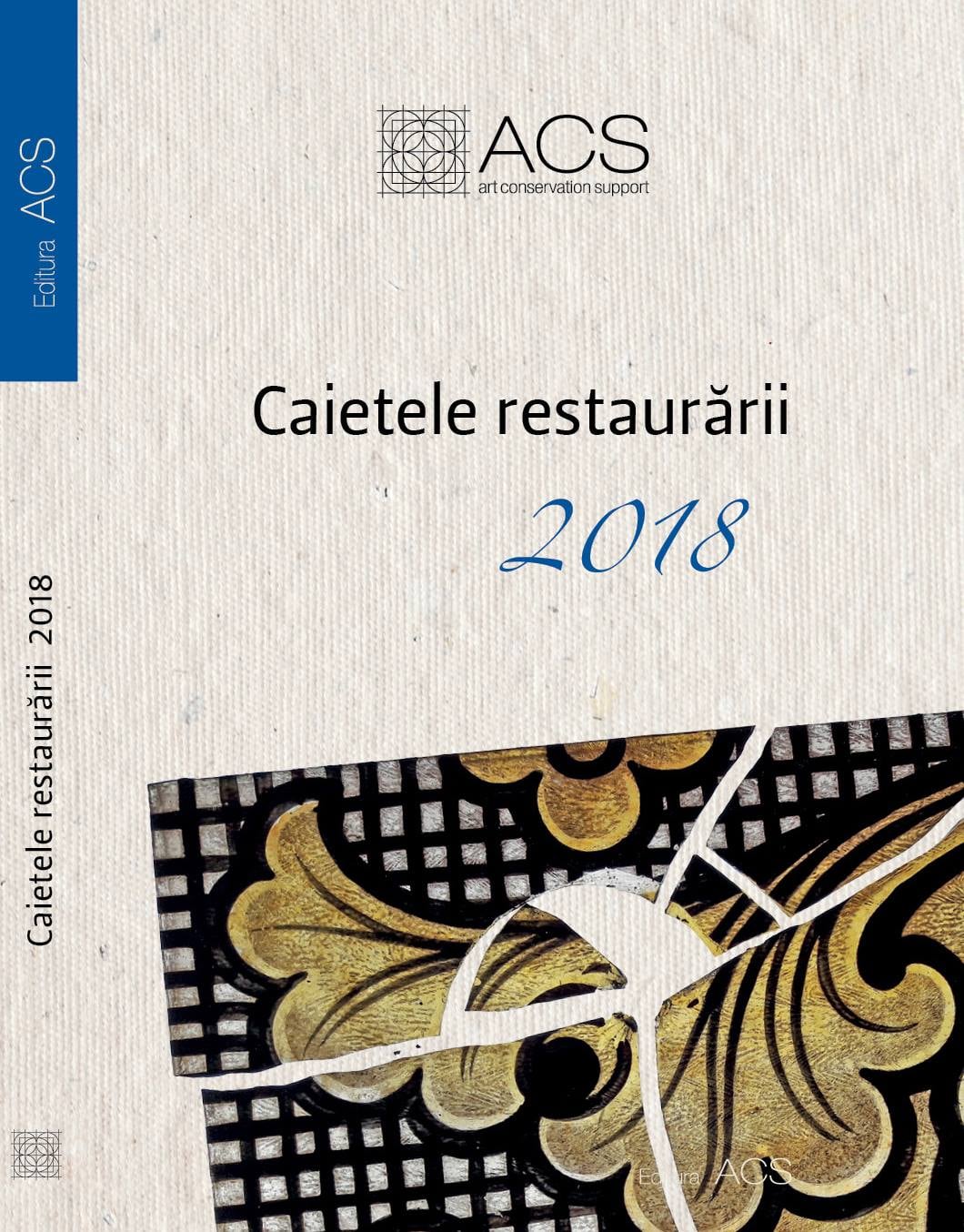
The wooden church from Budurăşti village, Stoeneşti commune, Vâlcea county was built in 1755-56 and is dedicated to the „Parvichia Paraschiva”, and is also included in the updated list of historical monuments, LMI 2015, Code VL-II-m-B-09691. Over time, it has been abandoned and suffered continuous degradations, reaching a state of ruin today. In December 2016, the paintings were brought to the Conservation and Restoration Section of the National University of Arts in Bucharest, where the conservation and restoration documentation was drawn up. Thus it was possible to outline the conservation-restoration procedure of the mural fragments retrieved from situ. Conservation-restoration operations consisted of: reinforcing and grinding the support layer, removing the provisional face, fixing the color film, recomposing the image from the recovered fragments, translating the wall painting onto a new support.
More...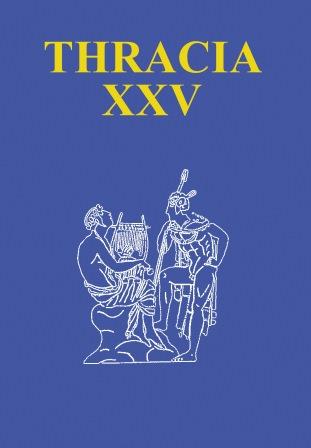
The Thracian megalith sanctuary Kara kaya is located in the Western Rhodopes Mountains. It occupies a dominant peak over the surrounding terrain, ending with a natural stone pyramid. The rock cuttings are concentrated on the top of the slopes and at the foot, near the Visteritsa river. This structure, combined with the semantics of the rock cuts, make it a classic symbol of the cosmic mountain.
More...
The article examines the depiction of the two female trumpet players from the Kazanlak tomb’s fresco and focuses on the instruments themselves. Fol discusses the parallels in estimated size, conical bore shape and funeral rite purposes between the Kazanlak tomb’s trumpets and the Egyptian pharaoh Tutankamun’s trumpets. The author uses physical and experimental evidence from ancient and folk trumpets to support her theory for existence of detachable mouthpieces carved from organic materials in ancient trumpets. She deduces the possible make-up and sound of the Kazanlak tomb trumpets from the recordings of Tutankamun’s trumpets, and from evidence presented in the fresco. She strengthens her 2009 hypothesis about a just-intonation based Thracian mode.
More...
As is well known, postage stamps now have existed in Europe for about 160 years. They are a type of applied graphic (or graphic design) artifacts – small paper elements with visible prints, which are intended for wide, public use. Postage stamps were introduced in Bulgaria in 1879 – immediately after the state Liberation. Until 1980, over 3000 stamps had been issued. Following the laws of the genre, they reflect a rich register of themes, motives and images, and were created by talented Bulgarian artists. Here, we explore the images on stamps, representing the ancient material heritage of Bulgarian lands. A number of them reproduce and promote specimens of Thracian artifacts. The focus of the study is on the systematization of these images, traced in the second half of the 20th century in Bulgaria. We looked for the answers to the following questions: Who are the artists – authors of such stamp images? When (and how) do they depict motives and images from our Thracian heritage? What are the semantic and symbolic messages of these graphic artifacts? The base of our report is traditional: art samples from ancient Thrace. The chosen perspective on them however, is new: their inclusion in contemporary graphic design, and their massive circulation in stamps. Their images have an administrative (documentary, commercial, etc.) application, but also significant social functions: informative, educational, artistic, advertising. Traditionally, postage stamps also make a significant contribution to the global knowledge and culture dissemination network.
More...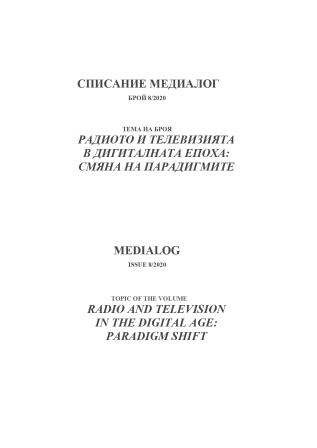
he religious radio and television channels play an important role for every believer - they introduce to the viewers various aspects of the spiritual life, trying to help also those who, for some reason, are unable to attend the temples. In this study, an attempt will be made to follow the development of the radio and television channels of religious organizations, as well as the current challenges facing them in relation to digitalization, convergence and Internet-based media. We will also look at the religious media positioning in our country, the appearance of the first radio and TV shows dedicated to the religion, as well as the current trends and problems faced by today's native media channels of the believers.Keywords: media, religion, radio, television, Internet
More...
In the production and performance of pop music, one of the mechanisms to “measure” and generate statistics, ratings and conclusions, are the charts. Do we have them, in the late 80s at all? A whole new generation of musicians declared its presence and art in this period but is it recognized in the printed media, or it is ignored? In case there is any trace in the press, is it still available in Internet today? In order to be present there, these events needs to be archived in old printed media first, then they need to be transferred in the Net.
More...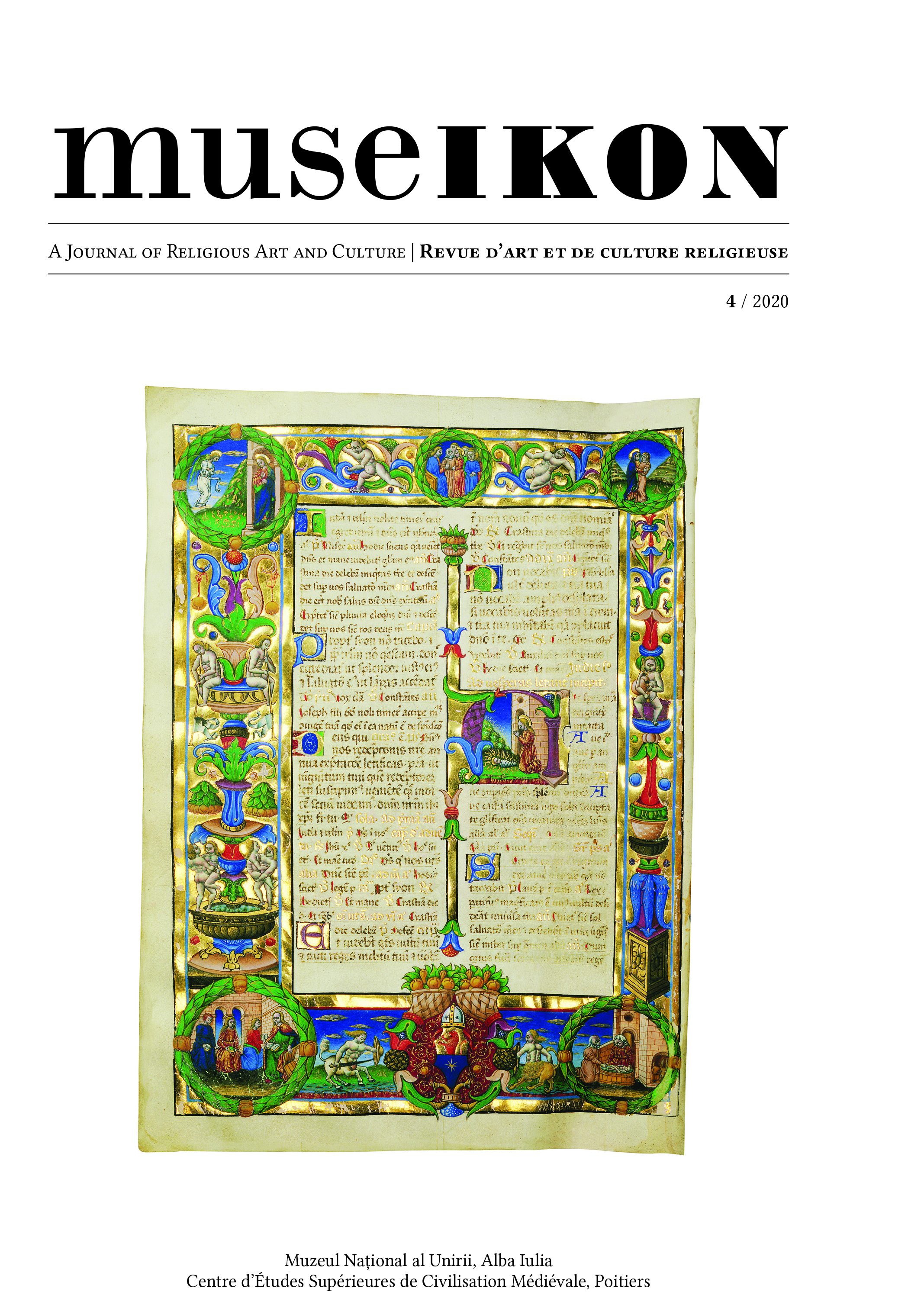
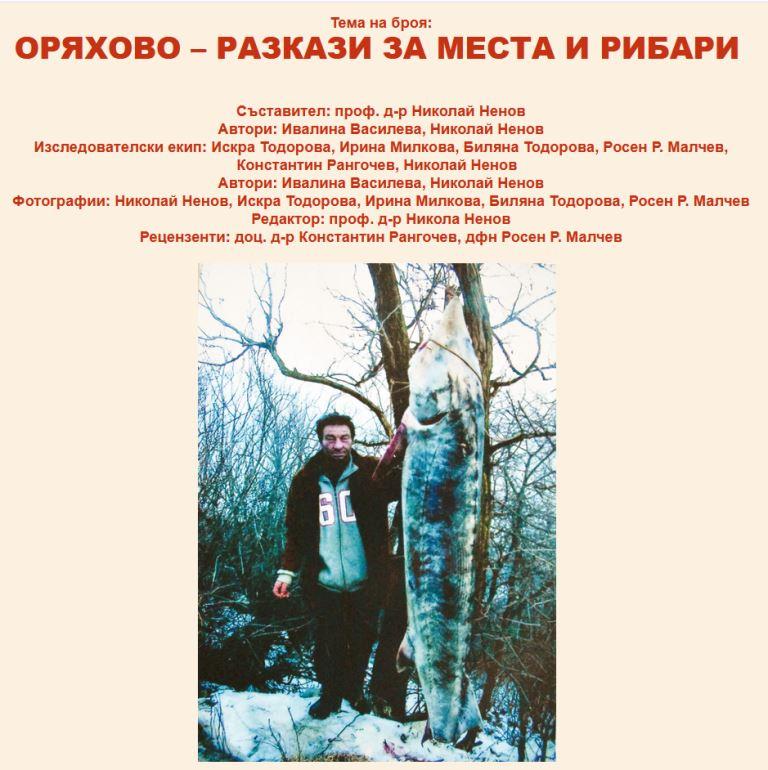
This text was created by a photo shoot made by Rosen R. Malchev, Dr. of Sci, during the field research of the fishing community in Oryahovo in the summer of 2019. It has documented elements of urban tissue, many slabs and monuments, significant exhibits in the museum, thus describing various forms of local heritage.The Images of heritage are elements of the life of local communities; they are necessary for the building of individuality, as well as for presentation to your own and others. They fit into the local forms of identity and in the present have basic functions in communication process with the past. The elements of local heritage registered here are valorized by our respondents – places and images are most resilient part in stories, part of urban orientation, as they have established themselves as visual memory markers.
More...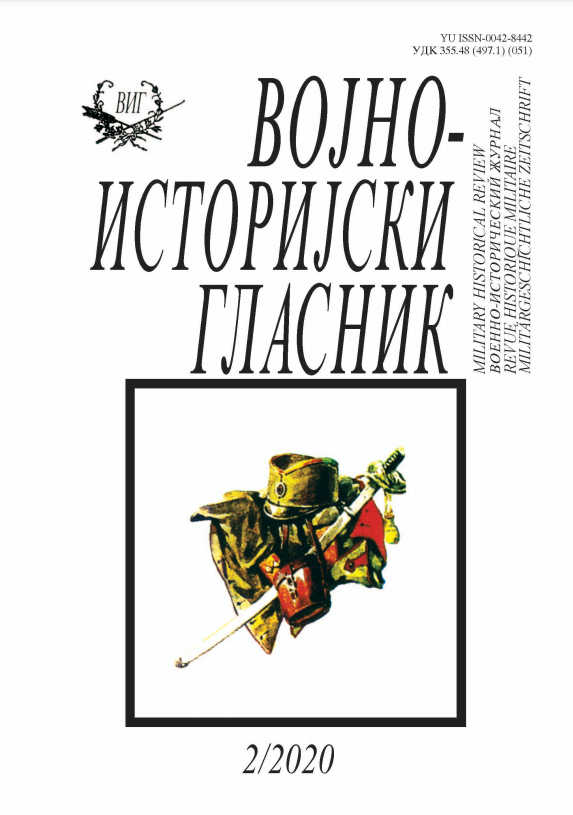
Serbian war photography came to life only during the First Balkan War, with Risto Marjanović, who came to Belgrade from the New York Herald in Paris at the request of Dragutin Dimitrijević Apis and became an official photo reporter at the Supreme Command. The entire photographic opus of Dragiša Stojadinović can be divided into five stylistically and chronologically different units, which, however, cannot be best seen as separate. The first consists of war photographs, primarily those from the First World War, which show military activities and dead bodies; the second consists of individual and group portraits with a large number of soldiers created in the interwar or passive periods of the war; in the third, photographs of prominent civilians appear; the fourth and fifth units, which are stylistically the furthest from the others, are family photographs taken after the war, but also pre-war, war and post-war photographs of which Stojadinović is not the author, in which he is personally depicted in military uniform, with his family or immediately after his arrest in “Glavnjača” and in prison in Sremska Mitrovica. Although each unit can be a photodocument, only by connecting them is a valid photo documentation obtained that fully illuminates Dragiša's entire oeuvre, especially if we take into account the fact that they are thematically different units. The photographs of Ljubiša Valić illustrating the book “Experiences of Sergeant Miladin” (1917) are by no means just an addition to the text. Valić started from a report, more precisely a war photo report, but his photographs show the war Golgotha of Serbian soldiers and civilians during the retreat through Albania in 1915-16. years gained a new quality by connecting with the text. The artist, who is both a photographer and a writer, has a difficult task to achieve the unity of photography and text, and Valić had to adapt his photographs to the book he also wrote, but based on the story of Sergeant Miladin. In this case, the text and the photo did not come from each other, they were created in parallel in the same area. With him, as with Stojadinović, one can see sincere intentions and freedom from any kind of insinuation and pressure from the side. Both of these photographers, as well as the vast majority of Serbian photographers from the First World War, tried to create as realistic a picture as possible, as much as their abilities and knowledge allowed at that time.
More...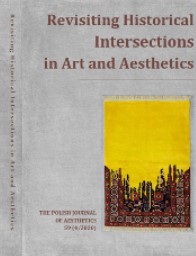
The long reception of the doll Olimpia in E. T. A. Hoffmann’s The Sandmann represents the change of the ideologies concerning androids. The paper focuses on three transformations of the Romantic creature in 20th century Avant-garde art, namely, in works by Max Ernst, Oskar Schlemmer, and Cindy Sherman. It is aimed at showing how the machine myth of the 18th and 19th centuries, closely related to Gothic Romanticism, could become an important part of 20th century art.
More...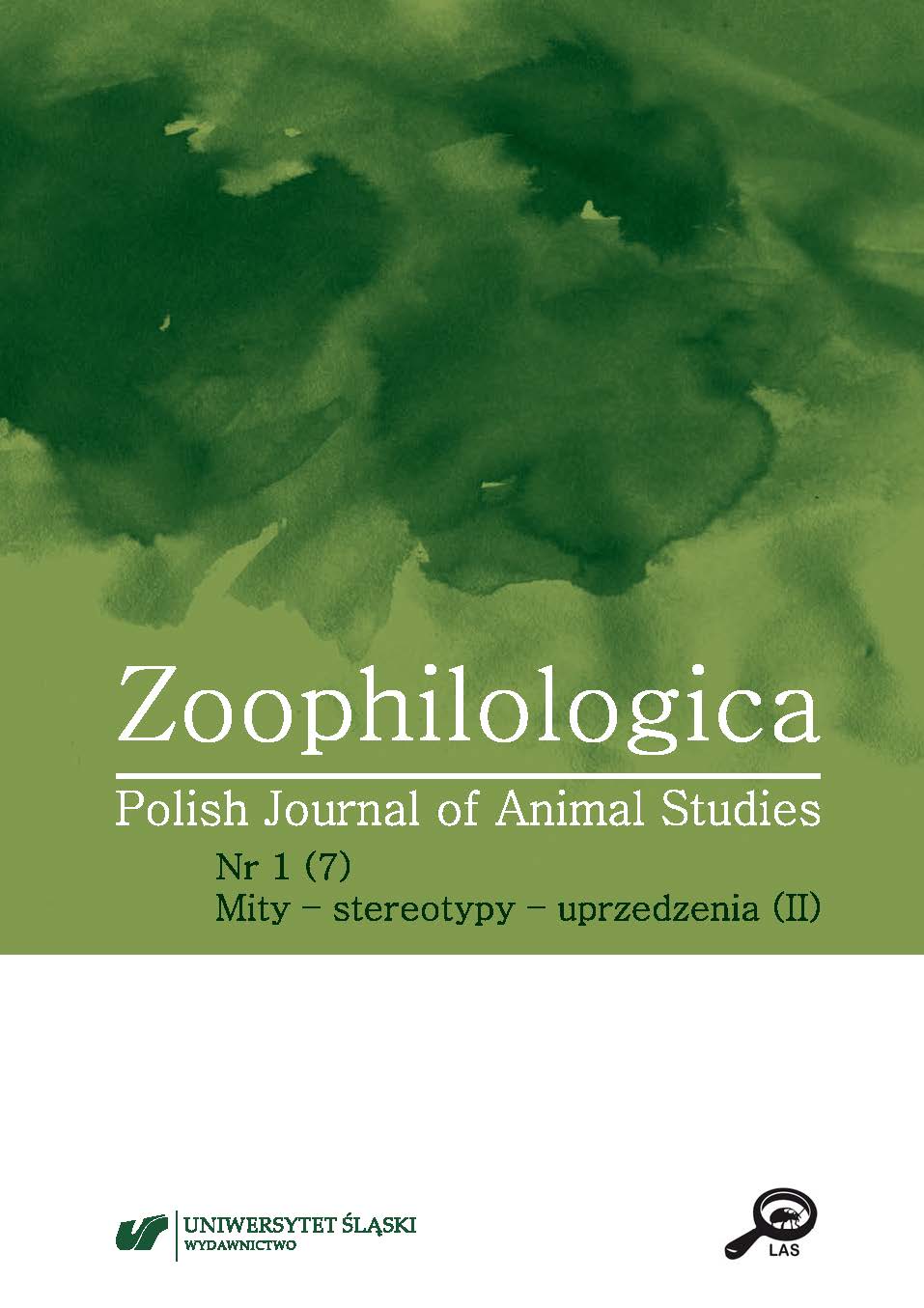
The main goal of this article is to ponder the presence of horses in the urban space of Kraków. Due to their common presence on the streets, horses constitute an integral part of Kraków’s cityscape. Joanna Gellner treats the issue of using horses as draft force in urban transport, by fire brigades and order services. She discusses the situation of horses in the context of the emerging animal welfare movement, which dates to the nineteenth century. The large scale of using horses caused a similarly large scale of abuse against them.
More...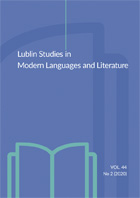
The paper analyzes a recent experiment in the collaborative production of ethnographic knowledge and the use of the graphic novel form as an alternative to the conventional academic monograph. Lissa: A Story about Medical Promise, Friendship, and Revolution (2017) is discussed here as a useful tool in the age of globalization for building recognition of the need to protect the lives of people other than our immediate kin, tribe, race, or nation. The paper argues that both the collaborative research behind the story and the formal experimentation stem from the authors’ sense of accountability to their informants. By telling a story about distant others who are given names and faces, Lissa’s authors encourage readers to develop empathy across borders.
More...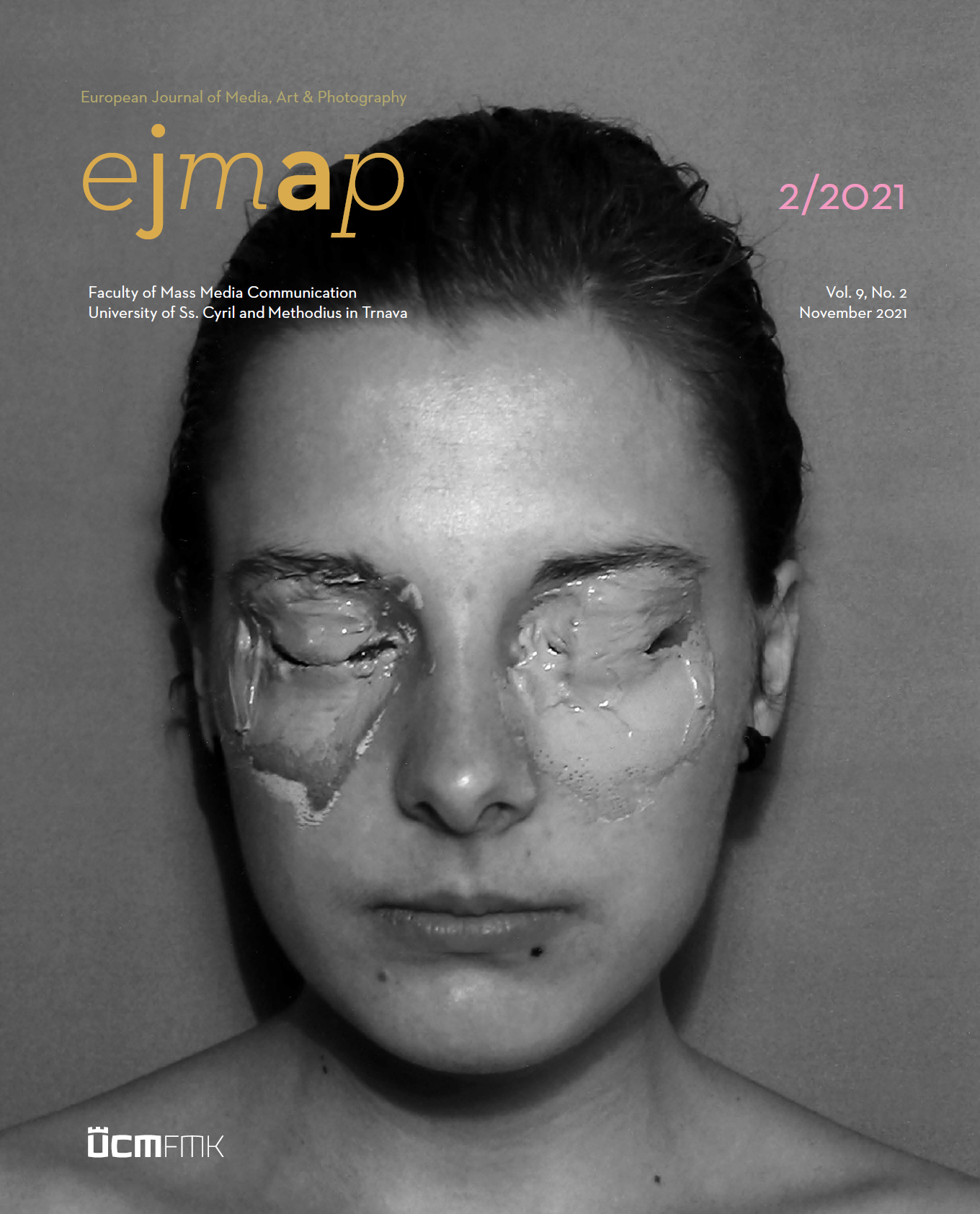
The study examines and compares various interpretations of the term camera as a means of expression in the individual stages of the development of film sciences, as well as the overlap of the mentioned theoretical conceptsinto groundbreaking film pieces by relevant filmmakers. In addition to theoretical knowledge, based on aesthetic and philosophical concepts, it also monitors their practical crossovers into cinematographic and directorialpractice. The paper examines two basic periods in which the camera phenomenon developed – the period of classical film shooting on film stock, i.e. the period of analogue production and the period of digital production, which brought new theoretical knowledge into the development of the camera phenomenon. The study seeks toposition the phenomenon of the cinematographic camera, which lies at the crossroads of art and technology. The value of this concept in film theories oscillates between the recording device and the means of expression. Theauthors of theoretical conceptions lead a long-term ontological and semiological discourse on how tounderstand the phenomenon of the camera in film – whether the camera is more like a pen writing in a speciallanguage or it is to be understood as a specific writing type or style. In any case, thanks to light, its mechanical-optical-electronical equipment conveys a cut-out of reality, which is a testimony of a special form and content. Film theory poses many questions and answers some of them, thanks to the knowledge of camera significancein film production realization. The purpose of this article is to zoom into the theoretical and practical side of looking at the phenomenon of cinematographic camera.
More...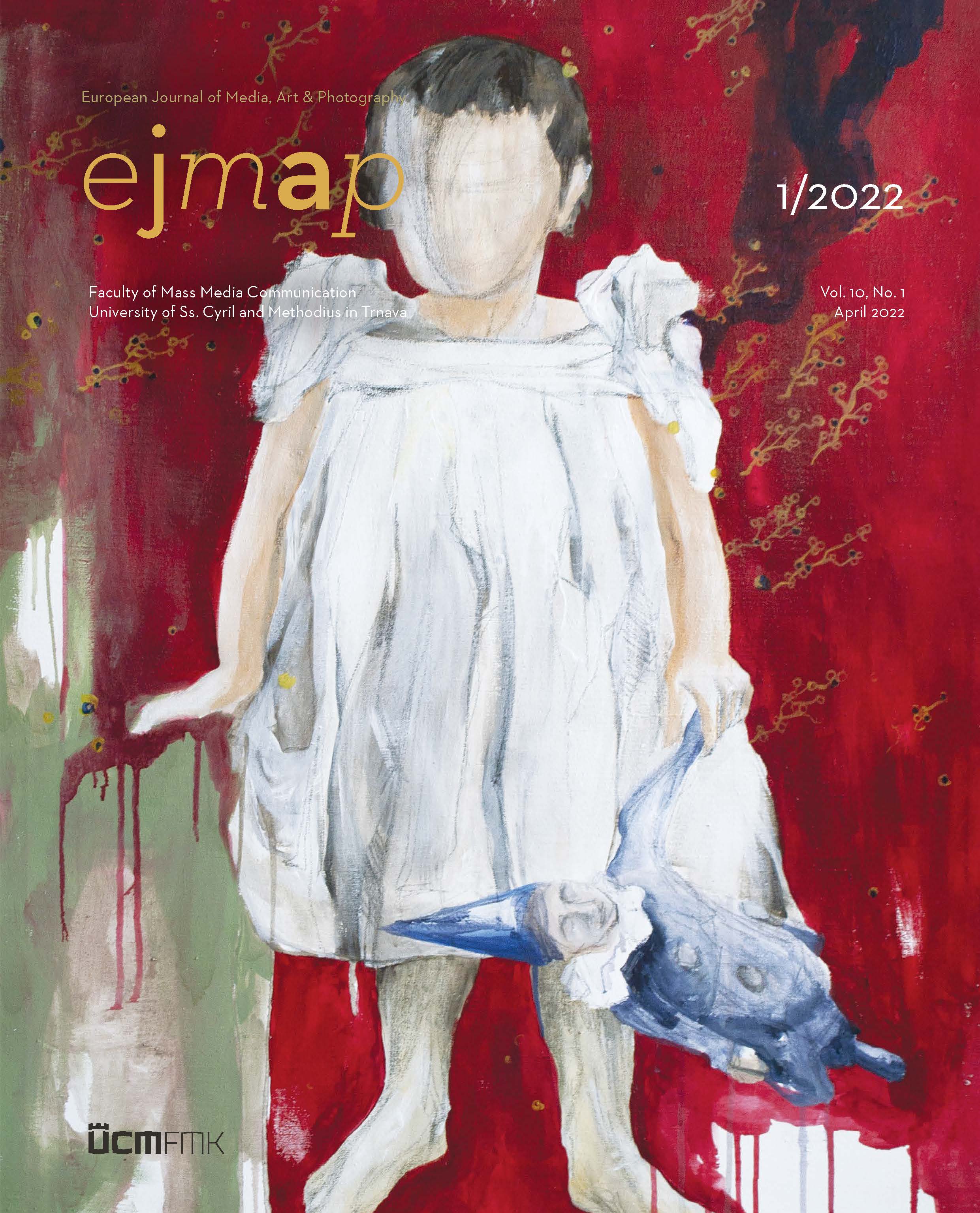
The portfolio of the Slovak visual artist Petra Cepková presents a selection of her artwork, which has been realised since the early 2000s in the fields of photography, installation and painting. The presented selection of the author’s works, from her university studies to her current pedagogical activity, is aimed at illuminating the author’s way of thinking about various visual possibilities of the medium of photography, as well as its different genres. Mainly, however, it is supposed to be a reflection on topics that gradually crystallize into intertwined parallel lines of emotions and thoughts that always de facto regard human relationships. Within the key topics in the concepts of her work, we could include terms such as transience, time, family, loneliness, love, violence, etc. Photography thus allows her to see and grasp the world in a different way, anew, more whole, and to see herself and others without masks of pretence, which might bring with it sadness but also a deep human understanding for others. In the context of this main idea that extends across her whole work, behind the various topics and photographic or visual art genres, we are able to read and observe metamorphoses of her entering our secret worlds, places where we would usually rather be alone, where we heal our painful spots. In the critical situation of the state of Western culture, her themes become topical and photography here is presented as a source of empathic thinking. The author in her work brings a different and new outlook on male and female aspects of partnerships, their social impact, building mainly on the significance of a functioning family. What, however, remains essential is her attempt to explain how very important it is to amend years-ingrained stereotypes. The author has a gift to sensitively grasp a fine fabric of underlying threads in places where our common perception scratches the delusive shell of the surface. She very clearly convinces us of a thoughtful and sensible study of the relationship between an author and the portrayed individuals, leading us to a sensitive perception of the even subtlest quiver of human souls. From the view of European photography, her work can be a great contribution, as it confirms that a perfect theoretical preparation is the basis of success in every art work.
More...
Reconstructing events, reviving the vital or reminding of and remembering the past are the main functions of an archive. A picture archives not only what has happened, but also, from the perspective of preserving the future, it projects historical time that struggles with timelessness. Photography – an image in archive, thus, comes to life twice, three times, four times. The photographic archive of student works at the Faculty of Mass Media Communication at the University of Ss. Cyril and Methodius in Trnava, after ten years of conceptual work with the medium of photography, stores rich archival and image material, which, in its scope of interpretation, visually maps not only the visible reality – public space, but also events, human stories, and urban or environmental space. Through authors’ projects, it breaks the visible world – surface, and dives deeper into the personal space and philosophy of a young person – a student, who uses an image to analyse their identity (regarding themselves and others) and transports their experience towards existential questions. It represents the significant progress of a young person when they are trying and are interested in expressing their opinion on social issues in any way (including the medium of photography) and to code and interpret public life according to their inner empirical knowledge.
More...
Our study reflects on the unique digital social activity Museum Art Challenge initiated by the Getty Museum in Los Angeles in a transdisciplinary fashion (touching on aesthetics, psychology and media and communication studies), which was shared on social media during the lockdown during the years 2020 and 2021. Our theoretical vantage points refer to the strategy of re-interpretation in the context of postmodern arts (V. Kordoš, C. Sherman, Gemmy). The recreation phenomenon is also discussed with a reference to the transformation of social communication into the environment of the so-called digital participative culture and the relatively novel concept of art-marketing. Using the method of qualitative hermeneutic content analysis, we investigated the artifacts (paintings created in the limited conditions of households on the basis of recreation of iconic art pieces from the collections of world galleries) created by Instagram users, and the specific research file also consisted of students studying media and communication sciences and aesthetics at Constantine the Philosopher University in Nitra (Slovakia). The results of our study indicate certain common strategies of social media users when re-interpreting art pieces.
More...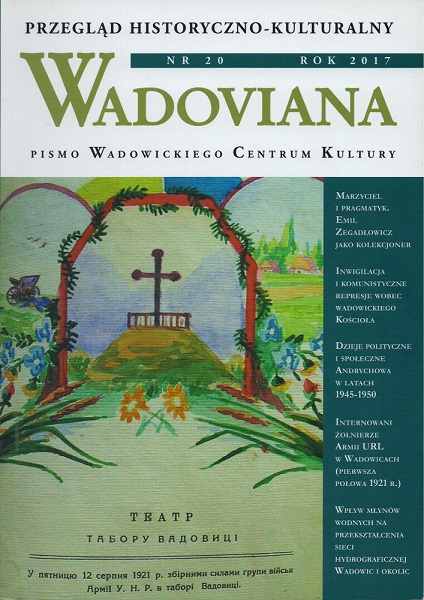
List of publications on Wadowice and the surrounding area, which appeared in 2017.
More...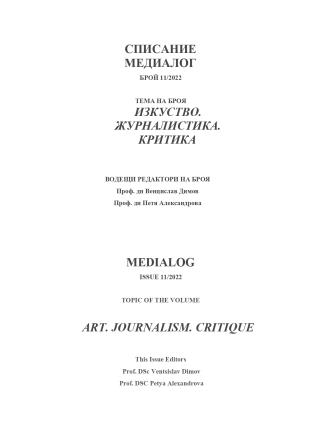
The situation in Europe over last few years roughly snatched us from the comfortable sense of predictability and sustainable political and social climate. Going back to the years around the two World Wars in the 20th century, it is certainly noticeable from our distance how these shocks change the pulse of the designers work, change the face, the philosophy of the product of their work. Today we are in the moment of serious test, again. The designers won’t stop working and offering alternatives, ideas and solutions. Interior and textile design companies are increasingly turning to the emotional nature of their products, and social networks have proved to be a lifeline for their relationship with the customers and the connoisseurs. Social isolation, limited live communication has led to a serious revaluation of the values. As a result, however, the approach to communication with the audience unexpectedly took on a much more human dimension. Broadcasting of live videos, interviews and various similar events has become a common practice, as You Tube channels, as well
More...